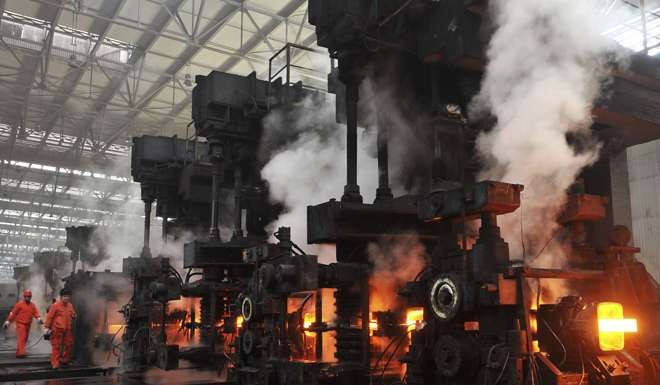
Asia junk bonds default rate to moderate amid globe easing
However, the commodities sector will continue to see high levels of default driven by overcapacity and weak demand, says Moody’s
The default rate on Asian junk bonds will moderate following global monetary easing, bringing relief to yield-seeking investors driven to high-risk debt amid record low yields for safe bonds, according to a report by Moody’s Investors Service.
However, debt issued by commodities companies - especially in the metals and mining sector - is an exception, with defaults on the rise and expected to continue.
The research report says the default rate for junk bonds - high-yield, non-investment grade bonds - issued by non-financial companies in Asia is expected to be as low as 3.3 per cent until the end of 2016. That compares with a default rate of 5.6 per cent in the 12 months to the end of June this year.
The drop is the result of the monetary easing measures adopted by major economies around the world.
The [mining] sector will remain vulnerable in the near term
Clara Lau, a Moody’s credit officer, said in the report: “Default risks will be alleviated by accommodative monetary policies employed by the central banks in Asia and globally, which will provide Asian high-yield companies with low cost funding and liquidity, thereby offsetting the impact of the low global growth outlook and the protracted challenging operating environment for commodity issuers.”
High-yield corporate bonds have been a hot investment this year. Given the extremely low or even negative yields on government bonds and other low risk fixed-income debt in many major economies, investors have poured money into junk bonds, attracted by the higher yields and the lower valuations relative to stocks.
A net US$6.4 billion had flowed into high-yield mutual funds globally by the end of August, according to data from Thomson Reuters Lipper, compared with an outflow of US$47.7 billion over the previous three years.

While the overall picture for junk bonds in Asia is improving, the outlook for the commodities sector looks to be getting worse. Of the eight defaults in the 12 months to the end of June, six were metals and mining companies, according to statistics from Moody’s.
Globally things don’t look any rosier. Of 102 defaults in the seven months to 31 July, 49 were oil and gas firms and 13 came from the metals and mining industry.
This trend is not expected to improve in the near term, as the mining sector is facing a fundamental downward shift, primarily driven by overcapacity and weak global demand.
“While market consolidation and reduction of non-profitable capacity in the mining sector is underway, the process will take time and the sector will remain vulnerable in the near term.” said Lau.
China, the world’s biggest steelmaker, is particularly feeling the pinch as it finds itself shifting to a lower growth trajectory.
China has been facing a surge in corporate bond defaults this year. According to Wind Information, a Shanghai-based financial data company, there had been a total of 41 default cases as of mid-August, more than in the previous two years combined.
A high-profile example was Dongbei Special Steel Group, a steelmaker in China’s northeast Liaoning province, which has defaulted on seven bonds worth 4.77 billion yuan so far this year, and last week posted a statement warning of another missed payment of 300 million yuan.
According to the Moody’s report, in its Chinese portfolio more bond issuers had experienced downgrades than upgrades. The pattern is expected to persist, given that the share of ratings with negative outlooks accounts for two thirds of the total.
